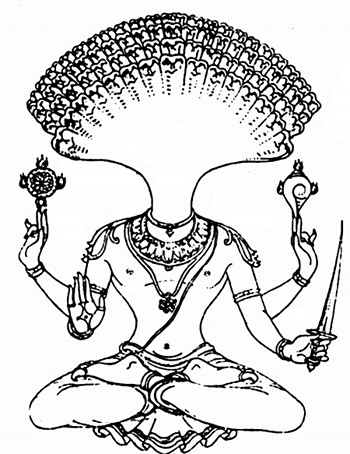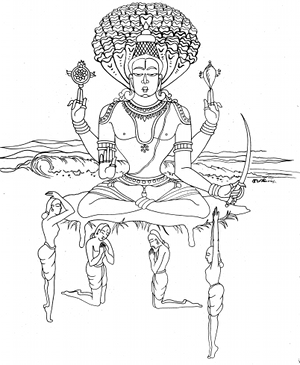A Vow to Teach and Learn
 I-1 Atha-yogānuśāsanam Now, let’s start our study of Yoga as it has been practiced, experienced, applied, and only then passed down from teacher to student throughout the centuries. May it be an auspicious beginning for the benefit of all future generations of Yogi-s.
I-1 Atha-yogānuśāsanam Now, let’s start our study of Yoga as it has been practiced, experienced, applied, and only then passed down from teacher to student throughout the centuries. May it be an auspicious beginning for the benefit of all future generations of Yogi-s.
Atha Here, the authority of the teacher is asserted to teach. This sutra is a promise by the teacher to teach all that she can AND by the student to learn all he can. This vow is called a Pratigjna Sutra or Mudra (seal) made with the right palm on top of the left on the right knee.
In modern society, going deeply into any one path or relationship is not the norm. We tend to be spiritual butterflies on the path to Enlightenment, thinking that this constant change in direction is equivalent to Freedom (Kaivalyam). Patanjali warns against this approach here. Pick your direction and go deeply into it with commitment. The commitment to the practice of Yoga, however, should be one that comes from a state of Abhyāsa (I-12), practicing being Present, not from a sense of duty or from other mental constructs (vrtti-s and kleśa-s). Your commitment to a particular direction should be made from the Heart not the head. The length of time that you stay committed to the direction also should come from this state of Presence, that state called Yoga. Beware of mind games that keep throwing new exciting directions your way. Use discipline (tapas) to keep on track without becoming rigid or unwilling to change direction if your Self-reflection (Sva-dhyaya) tells you need to do so (see YS II-1 on Kriya Yoga, how to make any action into Yoga).
Yoga is a great secret. The ancient Yoga tradition says not to teach just anyone. Such teachers say, “I have tested you, and only NOW you are ready for this study of Yoga.” If you give this knowledge to the wrong student, it can be misused. It can be used to injure others. As teachers, make sure the students want to learn to help not harm. Classically, students were put through many character tests. My teacher, DV Sridhar says, however, that the only prerequisite is that a student have śraddha (trust, enthusiasm, faith, YS I-20). It is the responsibility of the student to take the first step towards the teacher, but afterwards, it is the teacher’s responsibility to fan the flames of śraddha.

 Sundays, Maggie Reagh presents a series of blog posts on one of Patanjali’s key Yoga Sūtra-s (YS), encouraging you to reflect on how it relates to your current life situation through a Yoga Sūtra Journal Question.
Sundays, Maggie Reagh presents a series of blog posts on one of Patanjali’s key Yoga Sūtra-s (YS), encouraging you to reflect on how it relates to your current life situation through a Yoga Sūtra Journal Question.